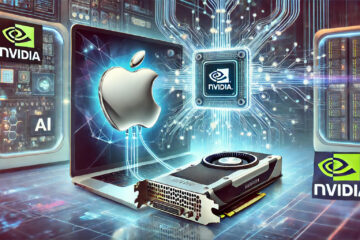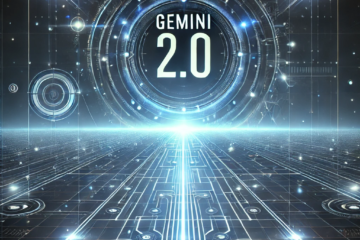Hugging Face Open Deep Research: Free AI Research Agent Challenges OpenAI’s Solution
Breaking New Ground in AI Research Accessibility
Hugging Face’s latest innovation represents a significant step forward in making sophisticated AI research tools accessible to the broader developer community. The company’s engineering team accomplished this feat through an intensive 24-hour development sprint, triggered by OpenAI’s decision to keep their Deep Research framework under wraps.
Understanding Open Deep Research
At its core, Open Deep Research functions as an intelligent research assistant, capable of:
- Autonomously navigating the internet to gather information
- Analyzing multiple sources simultaneously
- Generating comprehensive research reports
- Processing complex queries with a sophisticated understanding
The system builds upon existing AI models by incorporating an advanced agent framework, enabling it to handle multi-step research tasks with remarkable efficiency.
- Hugging Face Open Deep Research: Free AI Research Agent Challenges OpenAI’s Solution
- Breaking New Ground in AI Research Accessibility
- Understanding Open Deep Research
- Performance Metrics and Technical Specifications
- Future Development and Implications
- Impact on the AI Development Community
- The Road Ahead
- Frequently Asked Questions: Hugging Face’s Open Deep Research Launch
- Why did Hugging Face launch Open Deep Research?
- How does this launch impact the AI research landscape?
- What makes this launch particularly noteworthy?
- How does Open Deep Research compare to OpenAI’s solution?
- What are the immediate benefits for users?
- How can organizations leverage this new tool?
- What are the technical requirements for implementation?
- What’s the roadmap for future development?
- How does this launch affect AI accessibility?
- What are the limitations of the current release?
- How can developers contribute to the project?
- What sets this launch apart from other AI tool releases?
- What security considerations should users be aware of?
- How does this affect the competitive dynamics in AI research?
Performance Metrics and Technical Specifications
While Open Deep Research may not yet match OpenAI’s solution in terms of raw accuracy, its performance metrics are nonetheless impressive:
- Achieved 55.15% accuracy on the General AI Assistants benchmark
- Compares favorably to OpenAI’s 67.36% accuracy rate
- Utilizes OpenAI’s powerful language models (GPT-40, o1, and o3-mini) via API integration
- Supports modification for use with open-weights AI models
Future Development and Implications
Hugging Face isn’t stopping at research capabilities. The company has already begun work on replicating OpenAI’s Operator functionality, which would enable:
- Browser-based mouse and keyboard control
- Enhanced automation capabilities
- Expanded interaction possibilities
Impact on the AI Development Community
The release of Open Deep Research as an open-source solution carries significant implications for the AI community:
- Provides developers with transparent access to advanced AI research tools
- Enables community-driven improvements and modifications
- Promotes greater understanding of AI research agent architectures
- Accelerates the democratization of AI technology
The Road Ahead
The introduction of Open Deep Research marks a pivotal moment in the evolution of AI research tools. While currently showing promising results, the open-source nature of the project suggests potential for rapid improvement through community contributions and iterations.
For developers and researchers interested in exploring or contributing to Open Deep Research, the platform offers a unique opportunity to understand and enhance AI research agent technology. The movement toward open-source AI solutions continues to gain momentum, with Hugging Face leading the charge in making sophisticated AI tools accessible to all.
This innovation represents another step forward in Hugging Face’s mission to democratize artificial intelligence, providing developers and researchers with powerful tools to advance the field of AI research.
Frequently Asked Questions: Hugging Face’s Open Deep Research Launch
Why did Hugging Face launch Open Deep Research?
Hugging Face launched Open Deep Research in response to OpenAI’s Deep Research feature announcement. The company aimed to create a free, open-source alternative that would democratize access to advanced AI research capabilities. The launch demonstrates Hugging Face’s commitment to open-source AI development and their ability to rapidly innovate in response to market developments.
How does this launch impact the AI research landscape?
This launch represents a significant shift in the AI research tool market by:
- Providing a free alternative to OpenAI’s proprietary solution
- Encouraging transparency in AI development
- Enabling community-driven improvements
- Creating healthy competition in the AI research space
- Accelerating the democratization of AI research tools
What makes this launch particularly noteworthy?
The launch is remarkable for several reasons:
- Developed in just 24 hours after OpenAI announcement
- Achieves 55.15% accuracy on standard benchmarks
- Offers complete open-source access
- Uses existing OpenAI models while allowing for alternatives
- Demonstrates rapid innovation in the AI field
How does Open Deep Research compare to OpenAI’s solution?
Key comparisons include:
- Accuracy: 55.15% vs OpenAI’s 67.36%
- Cost: Free vs OpenAI’s paid solution
- Access: Open-source vs proprietary
- Flexibility: Modifiable vs closed system
- Development: Community-driven vs company-controlled
What are the immediate benefits for users?
Users gain access to:
- Free AI research capabilities
- Customizable research framework
- Transparent technology stack
- Community support and improvements
- Integration flexibility with various models
How can organizations leverage this new tool?
Organizations can:
- Reduce research costs
- Customize the tool for specific needs
- Contribute to its development
- Train internal teams on AI research
- Build proprietary solutions on top of it
What are the technical requirements for implementation?
Essential requirements include:
- API access for chosen AI models
- Development environment setup
- Basic AI/ML knowledge
- Programming expertise
- Computational resources
What’s the roadmap for future development?
Hugging Face plans to:
- Implement browser control features
- Improve accuracy metrics
- Add new model integrations
- Enhance research capabilities
- Develop additional tools like the Operator feature
How does this launch affect AI accessibility?
The launch impacts AI accessibility by:
- Lowering cost barriers
- Providing educational opportunities
- Enabling experimentation
- Fostering innovation
- Supporting research democratization
What are the limitations of the current release?
Current limitations include:
- Lower accuracy compared to OpenAI
- Dependency on API access
- Technical expertise requirements
- Resource intensity
- Ongoing development needs
How can developers contribute to the project?
Developers can contribute through:
- Code improvements
- Feature development
- Documentation
- Bug fixes
- Performance optimization
What sets this launch apart from other AI tool releases?
Distinctive features include:
- Rapid development timeline
- Open-source approach
- Direct competition with OpenAI
- Community-focused development
- Transparent methodology
What security considerations should users be aware of?
Important security aspects include:
- API key management
- Data handling protocols
- Model access security
- Integration safeguards
- Usage monitoring
How does this affect the competitive dynamics in AI research?
The launch influences the market by:
- Creating healthy competition
- Driving innovation
- Encouraging transparency
- Reducing monopolistic tendencies
- Promoting collaborative development




